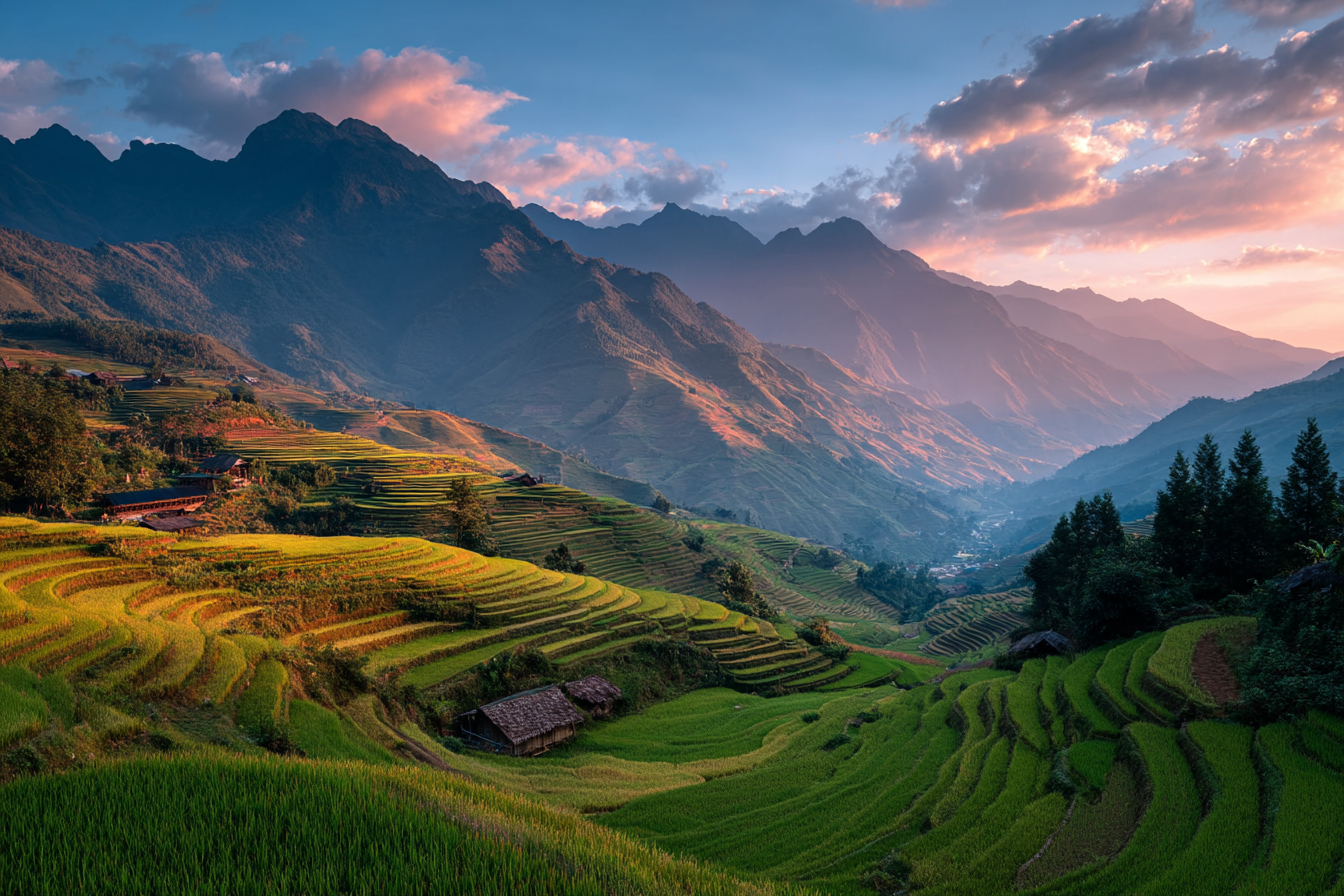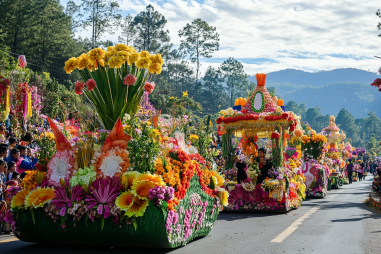Nestled in the northern mountains of Vietnam, Sapa is a captivating destination that offers a perfect blend of natural beauty, rich culture, and exciting adventures. For first-time visitors, discovering the charm of this quaint town and its surroundings can be an unforgettable experience. From lush terraced rice fields to vibrant ethnic minority villages, Sapa invites travelers to immerse themselves in a unique landscape and lively traditions. Whether you’re planning a quick getaway or an extended exploration, this complete Sapa travel guide will help you make the most of your trip while ensuring a smooth and enjoyable journey.
How to Get to Sapa
Getting to Sapa is relatively straightforward, though it requires a bit of planning as the town does not have its own airport. Most travelers arrive in Sapa from the city of Hanoi, which is about 320 kilometers to the southeast.
Here are the common ways to reach Sapa:
- Train: Taking an overnight train from Hanoi to Lao Cai is a popular option. The train journey offers a comfortable experience and scenic views along the way. After arriving in Lao Cai, you can take a short taxi or shuttle bus ride (about 30 to 40 minutes) to Sapa town.
- Bus: Several bus companies operate daily trips from Hanoi to Sapa. These buses usually take about 6 to 7 hours and can be booked online or at travel agencies in Hanoi.
- Private Car or Motorbike: For the adventurous, hiring a private car or motorbike ride from Hanoi allows more flexibility in timings and stops. However, this option may be more expensive and requires cautious driving on mountain roads.
Best Time to Visit Sapa
Sapa’s climate varies dramatically with the seasons, and the best time to visit depends on what you want to experience.
- Spring (March to May): The weather starts to warm up, and you’ll see fresh greenery and blooming flowers. This is a great time for trekking and exploring local villages without the heavy crowds.
- Summer (June to August): While summer brings lush landscapes and vibrant rice terraces, it’s also the rainy season. Showers are usually brief, but heavy rain can make trekking trails slippery.
- Autumn (September to November): Often considered the best time to visit, autumn features clear skies, cool temperatures, and golden rice fields ready for harvest. The scenery is spectacular, making this the peak season for tourists.
- Winter (December to February): Winters can be cold with temperatures occasionally dropping below freezing. Snowfall is rare but possible, adding a magical touch to the mountains. It’s less crowded, but some trails may be challenging.
Top Attractions and Landmarks
Sapa offers a variety of landmarks and natural attractions that showcase its stunning geography and cultural riches. Here are some must-see spots:
- Fansipan Mountain: Known as the “Roof of Indochina,” Fansipan is the highest peak in Vietnam, standing at 3,143 meters. Visitors can hike to the summit or take a cable car for panoramic views.
- Cat Cat Village: A traditional H’mong village located just a few kilometers from Sapa town, Cat Cat offers a glimpse of local life alongside cascading waterfalls and beautiful rice terraces.
- Silver Waterfall (Thac Bac): This impressive waterfall is located about 12 kilometers from Sapa. The powerful cascade is a great spot for photos and a refreshing break during your exploration.
- Muong Hoa Valley: Famous for its expansive terraced rice fields, this valley is perfect for trekking and meeting ethnic minority communities along the way.
- Sapa Church: Built during French colonial times, this pink stone church is an iconic landmark in the town center and a reminder of Sapa’s historical past.
Local Culture and Traditions
Sapa is home to diverse ethnic minority groups including the H’mong, Dao, Tay, and Giay peoples. Each group has its own language, customs, traditional dress, and crafts. Visiting the local villages provides a unique opportunity to learn about their way of life and support their communities.
Many ethnic minorities sell handcrafted textiles, embroidery, and jewelry in Sapa’s markets. Respecting local customs and asking permission before photographing people is important to help preserve their culture with sensitivity.
Traditional festivals, such as the H’mong New Year, feature folk dances, rituals, and special foods and are fascinating if your visit coincides with these dates.
Popular Trekking Routes
Sapa’s mountainous terrain makes it a trekking paradise, suitable for beginners and experienced hikers alike. The trails often pass through valleys, rivers, rice terraces, and hill tribe villages. Here are some popular trekking routes:
- Cat Cat Village Trek: A gentle walk of around 3 kilometers, ideal for first-time trekkers who want to experience village life and nature without a strenuous hike.
- Ta Phin Village Trek: A moderately challenging route that leads you to the Dao community, passing through forests and local farms. You may also enjoy options for homestay experiences here.
- Muong Hoa Valley Long Trek: Covering several ethnic villages like Lao Chai and Ta Van, this route spans several hours to a full day and offers an immersive cultural and natural encounter.
- Fansipan Summit Trek: For experienced trekkers, climbing Fansipan mountain usually takes 2 days and requires a licensed guide and good physical fitness.
Accommodation Options
Sapa caters to a variety of budgets and preferences, from cozy guesthouses to luxurious resorts. The key is to book in advance during peak seasons to secure the best options.
- Budget: Hostels and homestays provide affordable lodging and a chance to interact with local families. These are great for backpackers and those seeking authentic experiences.
- Mid-range: Boutique hotels and guesthouses with comfortable amenities and convenient locations in Sapa town offer a balance of comfort and value.
- Luxury: High-end resorts and spa hotels cater to travelers wanting a pampered stay with exceptional views and service, often located on the outskirts amidst nature.
Eating and Dining in Sapa
Sapa’s cuisine reflects its mountainous environment and cultural diversity. Street food stalls and local markets are ideal for sampling traditional dishes, while restaurants provide a range of Vietnamese and international options.
- Local specialties: Try dishes like “thang co” (a traditional horse meat stew popular with ethnic minorities), grilled pork skewers, and sticky rice with bamboo shoots.
- Fresh vegetables and herbs: Many dishes incorporate mountain-grown produce, offering fresh and unique flavors.
- Cafes and bakeries: For a relaxing break, Sapa has an array of cozy coffee shops serving freshly brewed Vietnamese coffee and pastries.
Travel Tips and Safety Advice
To ensure your Sapa trip is enjoyable and safe, keep the following tips in mind:
- Dress appropriately: Wear layered clothing to adapt to varying temperatures, and bring sturdy shoes for trekking.
- Stay hydrated and carry snacks: Especially when trekking, carry water and energy bars.
- Respect local customs: Always ask before photographing locals and respect their privacy.
- Book tours and guides through reputable companies: Verified guides can enhance your experience and provide safety on trails.
- Be cautious of weather changes: Mountain weather can shift quickly, so check forecasts regularly.
- Emergency contacts: Keep local emergency numbers and your accommodation details handy.
Whether you’re drawn by the natural wonders, cultural encounters, or tranquil atmosphere, Sapa offers an absolute treasure trove of experiences waiting to be discovered. By planning your journey with these insights and recommendations, your first trip will be both smooth and memorable. Embrace the adventure, connect with the local cultures, and let the stunning landscapes of northern Vietnam captivate your heart.







